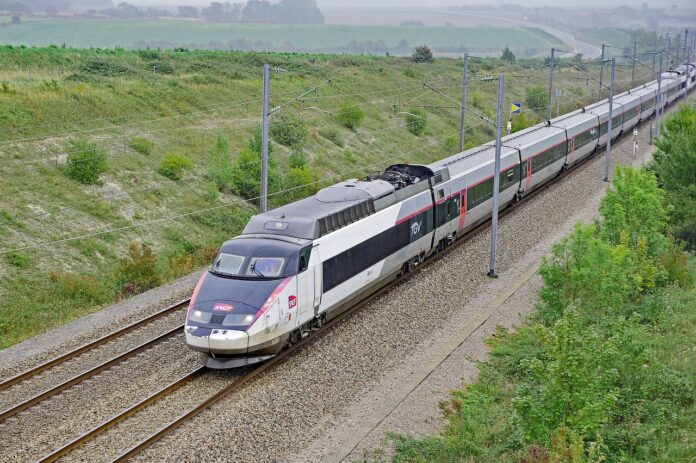An act of vandalism that occurred during the night of October 26 to 27 caused significant disruptions on the South-East high-speed line. In Nice, several TGV trains were canceled or delayed. A return to normal is expected by Tuesday morning, according to the SNCF.
During the night from Sunday to Monday, around 4 a.m., an arson attack damaged several signaling and communication cables south of Valence. The incident was discovered by SNCF Réseau teams who intervened on the site. The company describes it as an “act of vandalism.”
The fire destroyed 25 meters of cables, including optical fibers. Sixteen cables need to be replaced. Around twenty agents are mobilized on-site for repairs. Meanwhile, a second incident was reported around 6:30 a.m. near Bollène, this time related to a catenary cable theft.
The consequence was immediate: trains could no longer run between Valence Ville and Lapalud on the high-speed line. The TGVs were forced to use the conventional line, which greatly reduces the network’s capacity.
“All the TGVs are taking another route via the conventional line to avoid the incident area,” the SNCF specifies.
Nice blocked, travelers disoriented
In the southeast, the situation is particularly tense. At the Nice-Ville station on Monday morning, travelers saw a series of cancellations on the display boards. The 9:56 a.m. TGV to Paris was canceled. Other trains heading to the capital or coming from the north were also canceled.
Delays are accumulating for the connections that have been maintained. In the south-north direction, some TGVs are experiencing up to three-hour delays to Paris, Lyon, or Strasbourg.
“Normal traffic is expected to resume on the morning of Tuesday, October 28,” the railway company indicates on its website. In the meantime, the SNCF teams must adapt the transport plan, train by train.
While the regional lines between Nice, Marseille, and the Alpes-Maritimes remain operational, tension is rising among travelers who sometimes have no quick alternatives. The road, already congested during peak times, cannot absorb this massive transfer of passengers.
In Nice, this national outage reveals a well-known fragility of the rail network. The city, already remote from major high-speed rail lines, often finds itself isolated at the slightest incident. Detouring via the conventional line lengthens already long journeys by several hours and reduces the number of available trains. Regular users decry a total dependence on an aging infrastructure.
For many people from Nice, this situation underscores the territory’s vulnerability to external events. Without a direct connection to the LGV, Nice remains at the end of the line, dependent on a single segment and a complex logistics system.
Enhanced security measures
The SNCF and the Ministry of Transport are considering immediate measures to prevent such acts from recurring. The government reiterates that securing the rail network is a priority. According to the official statement from the Ministry of Transport, “24/7 surveillance of the 28,000 kilometers of railway network” involves 3,200 Railway Security agents, in conjunction with the police and gendarmerie.
Advanced detection technologies are being used: GPS trackers, fixed or mobile alarms, cameras, and even drone surveillance. The National Security Command Post (PCNS) ensures coordination in the event of an alert. Nearly 100 million euros are allocated each year for network protection.
The Minister of Transport, Philippe Tabarot, is scheduled to visit the National Railway Operations Center (CNOF) in the afternoon. He will provide an update on the repairs and the progressive resumption of rail traffic.
Persistent vulnerability in the South-East
This incident, affecting one of France’s main railway lines, reignites the debate on the security of strategic infrastructures. But it also highlights the fragility of the South-East, where every disruption on the LGV has direct consequences for the Côte d’Azur.
In Nice, residents once again observe the difficulty in accessing the capital and the lack of alternatives. While network modernization works are long overdue, the city remains dependent on a single and sensitive axis.
Normal service is expected to return by Tuesday morning. In the meantime, thousands of travelers remain in uncertainty. For them, this day illustrates the limits of a saturated and vulnerable rail system.


